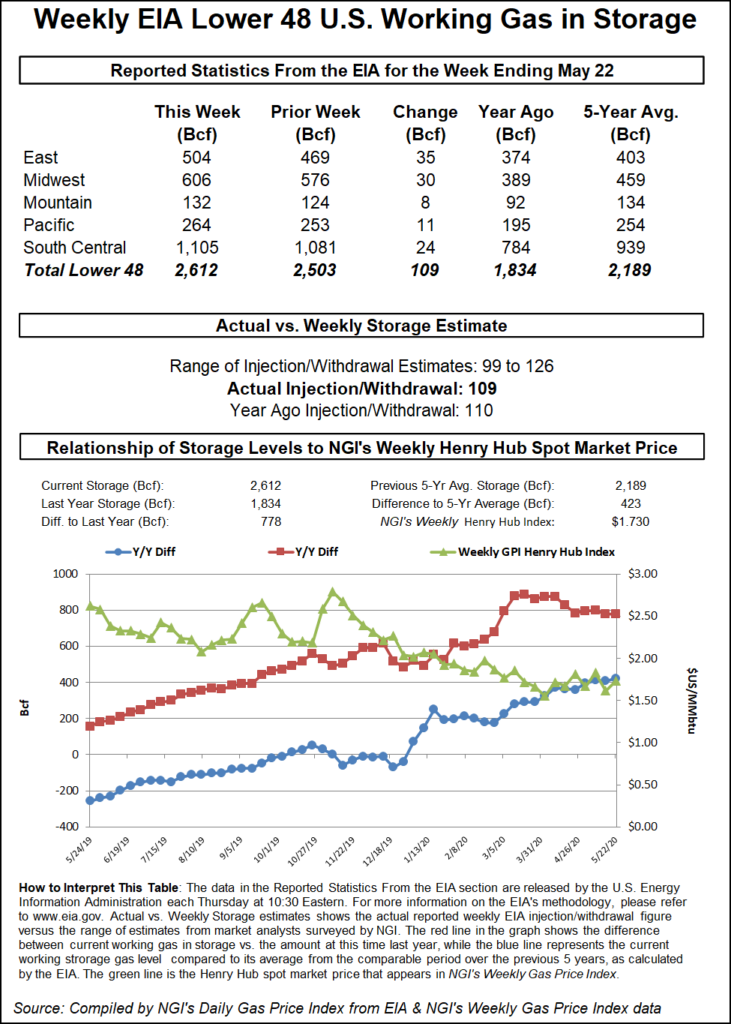EIA’s High-Side Natural Gas Storage Build Keeps Pressure on Futures
The U.S. Energy Information Administration (EIA) reported a 109 Bcf injection into natural gas storage inventories for the week ending May 22, coming in on the higher end of expectations and well above the historical five-year average.

The triple-digit print sent Nymex futures prices, already slightly lower day/day, down another couple of notches. The July Nymex contract, on its first day at the front of the futures curve, was down 2.0 cents at $1.866 in the minutes leading up to the report. When the print crossed trading desks, the prompt month slipped to $1.837, and by 11 a.m. ET was trading at $1.844, off 4.2 cents from Wednesday’s close.
NatGasWeather analyst Andrea Paltrinieri characterized the EIA figure as “a no good number.” Participating on The Desk’s online energy chat platform Enelyst, Paltrinieri said he would have preferred to see an injection in the high 90s Bcf range in order to confirm some tightening of the supply/demand balance.
“I was at 110 Bcf, not so good to avoid 4 Tcf right now in my model,” the analyst said.
Another Enelyst participant noted that the 109 Bcf injection was an improvement when adjusted for weather. “It’s still less than 1 Bcf loose. Power burns are picking up quickly with demand, and we could see more tightening…just don’t know about June production and liquefied natural gas.”
Ahead of the report, a Bloomberg survey of 11 analysts produced a range of estimates from 99 Bcf to 126 Bcf, with a median of 104 Bcf. Reuters polled 16 analysts, who had the same range of estimates but arrived at a median of 106 Bcf. NGI projected a 110 Bcf build.
Broken down by region, the East injected 35 Bcf into storage, and the Midwest added 30 Bcf, according to EIA. South Central inventories rose by 24 Bcf, including a 20 Bcf build in nonsalt facilities and 3 Bcf build in salts. The Pacific added 11 Bcf into stocks, while the Mountain region injected 8 Bcf.
Total working gas in storage as of May 22 stood at 2,612 Bcf, 778 Bcf higher than last year and 423 Bcf above the five-year average, EIA said.
© 2024 Natural Gas Intelligence. All rights reserved.
ISSN © 1532-1231 | ISSN © 2577-9877 |
